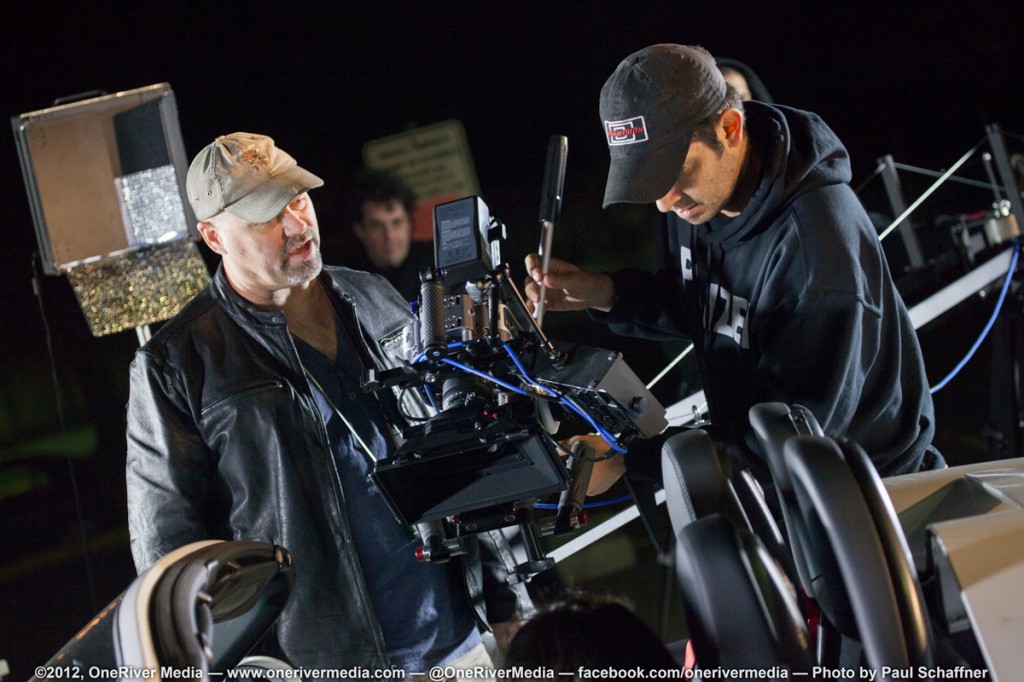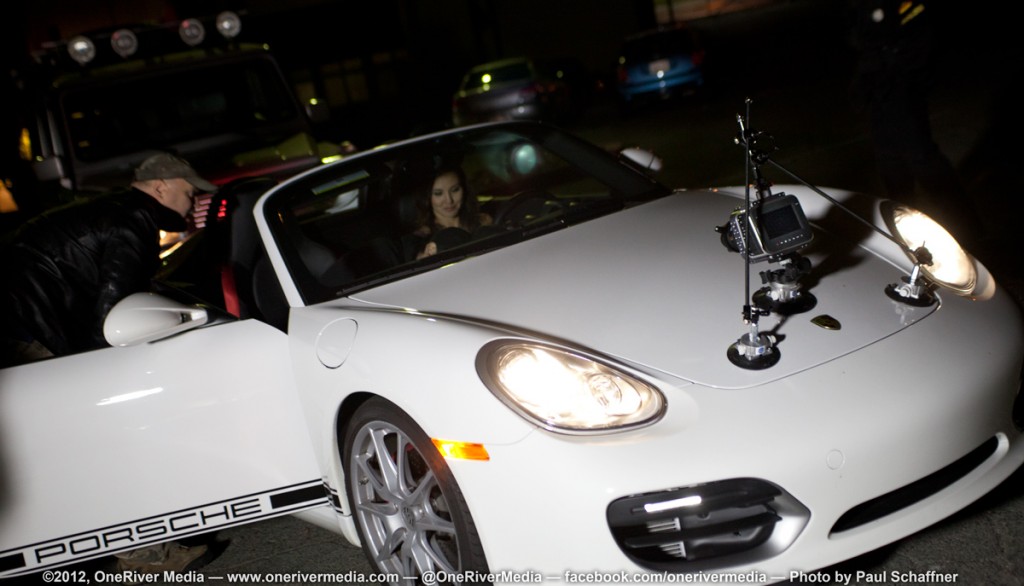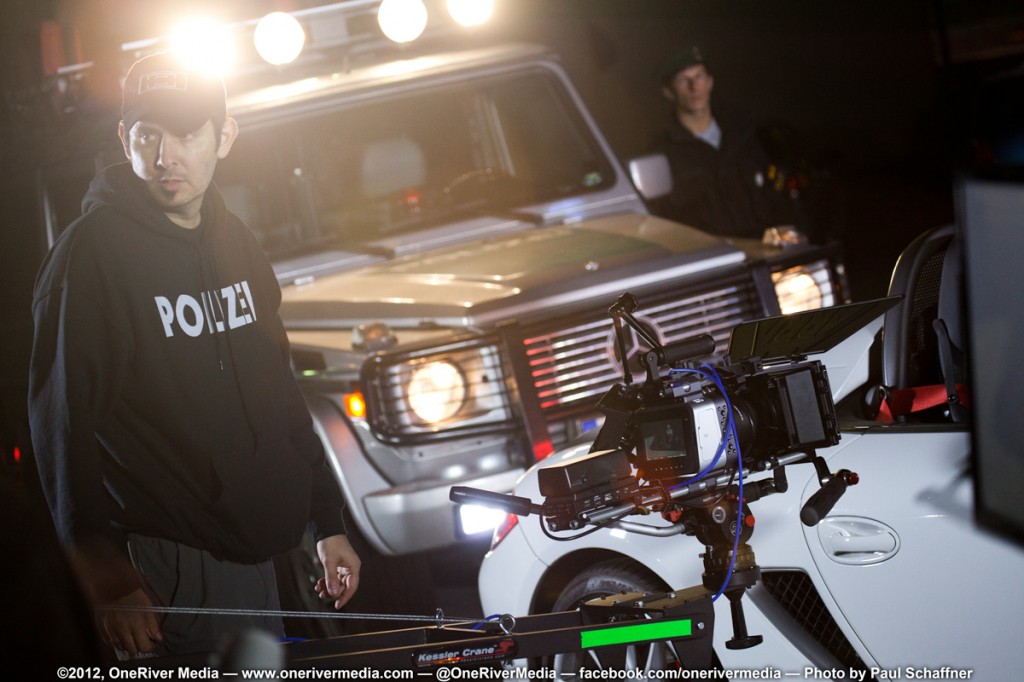Comparing the Canon 8-15mm, the Sigma 8-16mm, and the Rokinon 8mm on the new Blackmagic Design Cinema Camera.
Since the announcement of the Blackmagic Design Cinema Camera last April at NAB, there’s been a lot of speculation that this camera wont be able to shoot wide. This simply isn’t the case. If you think back to Super 16mm film or ENG cameras of old that shot using 1/3-inch to 2/3-inch sensors, you’ll quickly realize there were in fact options to shoot wide with those cameras.
We’ve had our Cinema Camera for a short while now, and last week, our NDA was (partially) lifted from BMD to allow us to finally show the camera and start shooting with it in public and with crew. Oh the liberty!
Check out our Facebook page for more info and a bunch of photos, including behind-the-scenes of our large production shoot last Saturday night.
So during this time, the first thing I actually tested was wide-angle usage. As expected (and as theorized with my calculations based on my Cinema Camera article on Creative Cow last April), the Cinema Camera can shoot wide, and in some cases, perform a variable crop function on certain lenses that vignette or pinhole on other cameras with larger sensors.

Director, Steffan Schulz left, and DP, Marco Solorio on right shooting on-location with the new Cinema Camera on a OneRiver Media production. Mounted to the camera is the Sigma 8-16mm lens, and works perfectly with the ARRI MMB-1 mattebox without any vignetting.
The group of images below was quickly shot just an hour or so ago here at our facility in the main edit suite. Since I’m strictly comparing lens width, I didn’t spend too much time dressing up the “scene” or doing an exotic grade.
Obviously the Canon 5D Mark II and Canon 7D were recorded at H.264. The Cinema Camera was shot at 12-bit RAW CinemaDNG, quickly debayered/exposed in Lightroom 4, and exported out. The final image is compressed to JPEG at 51% quality, so there will be inherent artifacts there, so keep that in mind.
Personally, I really like the Sigma 8-16mm f/4.5-5.6 HSM lens so far. It doesn’t have any barrel distortion at all and the edges stay straight throughout. Sharpness isn’t bad either, even wide open.
The Canon 8-15mm f/4L is clearly the widest, but has obvious barrel distortion. Zoom in to 15mm and the distortion goes away for the most part. It’s a sharp lens throughout. And the solid build-quality is typical of all Canon L lenses; very nice.
The Rokinon 8mm T3.8 cinema prime lens is just a shy less wide than the Canon 8-15mm lens, and has its own share of barrel distortion, albeit less than the Canon. Fully wide open, this lens is soft. To get decent sharpness, you need to stop down to about T5.6.

Director, Steffan Schulz giving instruction to actress, Alicia Forbrich. Mounted to the hood of the Porsche is the Ciname Camera and Sigma 8-16mm lens.
It should be noted too that some of these lenses wont work for video on the 5D and 7D. On the 5D , the 8mm width either pinholes or imposes severe vignetting (not cool looking vignetting, but hard edged fugly vignetting). The 5D can really only go down to about 15mm wide, and only on the 8-15mm lens (the other two lenses wont work). The 7D can fully use the Sigma and Rokinon lens, but can really only go down to 10mm on the Canon 8-15mm lens.
Between the three lenses, the Canon is the widest on the Cinema Camera, but has obvious distortion. The Rokinon is a little less wide, soft wide open, but employs built-in focus gears and de-clicked aperture, which is very nice. Cheap too.

DP, Marco Solorio on left getting ready for a motion shot using our 12-foot Kessler Crane. Mounted to the Cinema Camera is the Sigma 8-16mm lens. Yes, we did use quite a number of other lenses on this production as well!
On my 5D, shooting at 16mm is pretty dang wide. The widest I’d usually go was with my 24mm f/1.4L II prime for any real production. With that in mind, I’d much rather shoot with the Cinema Camera in 12-bit RAW using the Sigma 8-16mm lens and not only get the focal width I need, but also have superior image quality and dynamic range that the DSLR cameras can’t touch with a 1-million foot pole. Oh, did I mention the dynamic range? Yeah, GOBS and GOBS of dynamic range. But that’s another blog post.
Don’t forget to follow us on Twitter @OneRiverMedia when we announce new production and post-production related news, tips, blogging, BTS, and bad jokes.
Share this post
Article © OneRiver Media, including applicable photographs. All rights reserved. Article and its contents shall not be copied or reprinted without the expressed written approval of OneRiver Media.
FCC Disclaimer - Links from this article might go to affiliate links to B&H and/or Amazon (not much different than the ads you see in YouTube ads, but more focused). Visiting these links (or buying products from the links) cost you nothing additional and may in turn help us pay for the cost of hosting these free articles we write. These articles take an enormous amount of time (in most cases, weeks and months) to research, draft, write, edit, rewrite, and shoot custom photography/video for. In no way do these affiliate links cover the cost of all of that, so any help these links can provide is a huge help to us to continue to offer free content to our readers.


Comments 21
Hey there, thanks for this helpful post! I’ve got a Black Magic camera on order with B&H currently.
People seem very concerned with the wide-angle lenses on the 2.4X crop, but this post shows some very economical options.
I’m planning to try out a Canon EF 16-35mm II-L with the BMCC.. don’t own anything wider, but that Sigma 8-15mm and Rokinon 8mm are both pretty reasonable.
I used to have an 11-16mm f/2.8 Tokina for a Canon 7D, was very happy with that lens, thinking it would also look nice, sharp & wide on the BMCC.
Do you have any trouble with the variable aperture on the Sigma? I’ve stayed away from variable-aperture zoom lenses.
Author
So far, no issues with the variable aperture on the Sigma. If I know I’ll go to 15 or 16mm, I’ll swap in the Canon 16-35mm f/2.8L. And if even tighter in, I’ve been using my Canon 24mm f/1.4L II prime a lot on it, which feels like my 50mm f/1.2L prime on my 5D.
Since all three lenses have shaped front elements, I strongly reckon it’s impossible to use any
ND-filters or matteboxes… This ends up in a dilemma while shooting with a lot of light. Imagine you want to shoot wide open at f/2.8 with a shutter of 1/50th (fixed), ISO 100 (low as possible) and your image is still overexposed…
Probably that’s why you shot at night? 😉
Please correct me if I’m wrong!
Author
On the contrary! As you can see in the BTS photos on set, we’re successfully using an ARRI MMB-1 mattebox with the Sigma, as that mattebox was designed to go wide. No vignetting at all. ND to your heart’s content!
I apologise, should have put my glasses on 😉
Thank you.
Great stuff guys, have you any thoughts on the canon efs 10-22mm.? I have one of these and am getting a bmc!
Author
Thanks, Rod. I’m sure the Canon EFS 10-22mm would be a nice lens on the Cinema Camera. You’ll get some good width out of it. I haven’t used it myself, but I’m sure it’ll work great.
Pingback: 3 more Blackmagic Cinema Camera Reviews – The Viral Farm
Hi, thanks for the comments on the 10-22 lens. You seem to have used the 7d a lot, what do you think is maximum ISO you can use on the 7d before it gets noisy? cheers Rod
Off topic question: where did you get the furniture in your edit room – specifically the desk that houses your color controller, Durrough meters, monitors, etc…
Thanks for your post
Author
Thanks. It’s a Crossfire X-K3 with side cart made by TBC Consoles. Honestly, they make the best consoles IMO. I have a couple of photos listed in their gallery here: http://www.tbcconsoles.com/gallery.aspx?galleryid=5#.UEQjmY6LG18
I also did a review on it for Creative Cow years ago here: http://library.creativecow.net/articles/solorio_marco/tbc-review.php
Excellent info, thank you. Unfortunately, it looks like they don’t make the Crossfire anymore but I definitely get the idea. I appreciate your response and thank you for posting the pics from the BMCC.
Hi. Just wondering how well the BMC performs in low light if using Sigma at 4.5. What would the comparison be to the 5D. Thanx
Also just wondering if it takes EF-S lenses.
cheers like the sigma 30mm 1.4
Author
Hi Dan. Well, any lens at f/4.5 isn’t going to have the greatest low light sensitivity. It’s just the physical nature of the lens. If you need to shoot in low light, only using available light, then I’d highly suggest an f/2.8 or faster. Ideally, a prime lens at f/1.4, or if budget allows, f/1.2 or faster. And yes, EFS lenses will also work on the Cinema Camera.
Awesome tests! I am sold. But I did notice (in all fairness) that the BMC cam also seems to blow out highlights with different lenses…
Look at the Greek column holding the speaker. The Rokinon lense clips out the detail in highlights versus the Sigma. Also the Rokinon looks a little sub standard and is hailed as the affordable “cine” lense. So you really have to outfit the BMC well to achieve what you are looking for.
Author
Thanks for the reply. Please keep in mind that the BMCC footage was quickly graded to roughly match that of the 5D and 7D. Although there may appear to be a slight difference in highlight detail between the two lenses, I haven’t noticed a real difference in real-world production that would call for fixing a particular lens against another. Thanks.
Are you using a EF-s to EF adapter for the Sigma 8-16mm? I’m only able to find this lens with an EF-s mount. BM was quoted saying
“If it’s fully compatible with the EF mount – yes. Some EF-S lenses are, and some are not – and we are not sure about that Sigma.”
Thank you
Author
Hi Ford. No adapters are required to use EFS lenses on the Cinema Camera. You can either use EFS or EF as is with no modification.
Hi
I’m a 5D Mark 2 user and planning to switch to either Mark 3 or BMCC. Just a couple of problems I’ve been unable to solve!!!
1. To get a wide shot, if I use a Sigma 8-16 on BMCC, would it match the image quality with my Canon L series lenses?
2. Battery time is a big problem with BMCC. If i get a Switronix… would I be able to use this package on a glidecam HD 4000? I mean would there be any balance issues or stuff like that?
Any help would be greatly appreciated!
Thanks
Author
Hi Imran. Your post was marked as spam and didn’t get caught until now.
1. Unfortunately there isn’t a Canon L equivalent to compare the Sigma 8-16 with. All Canon L lenses are full frame EF lenses and the Sigma 8-16 is EF-S (APS-C). The “closes” Canon L lens is the 8-15mm f/4L fisheye, but they are really two different lenses. We own both these lenses and I rarely use the Canon 8-15 as it’s more specialized. Optically however, the Sigma 8-16 has served us very well. It’s slow so you need light for it, but other than that, it looks great.
2. We attache our V-mount and Gold-mount batteries to the bottom sled of our Glidecam/Steadicam style rigs. Serves as a power source for everything and balances out the rig. Works perfectly and the camera can last up to 6-8 hours on a single battery.
Cheers!